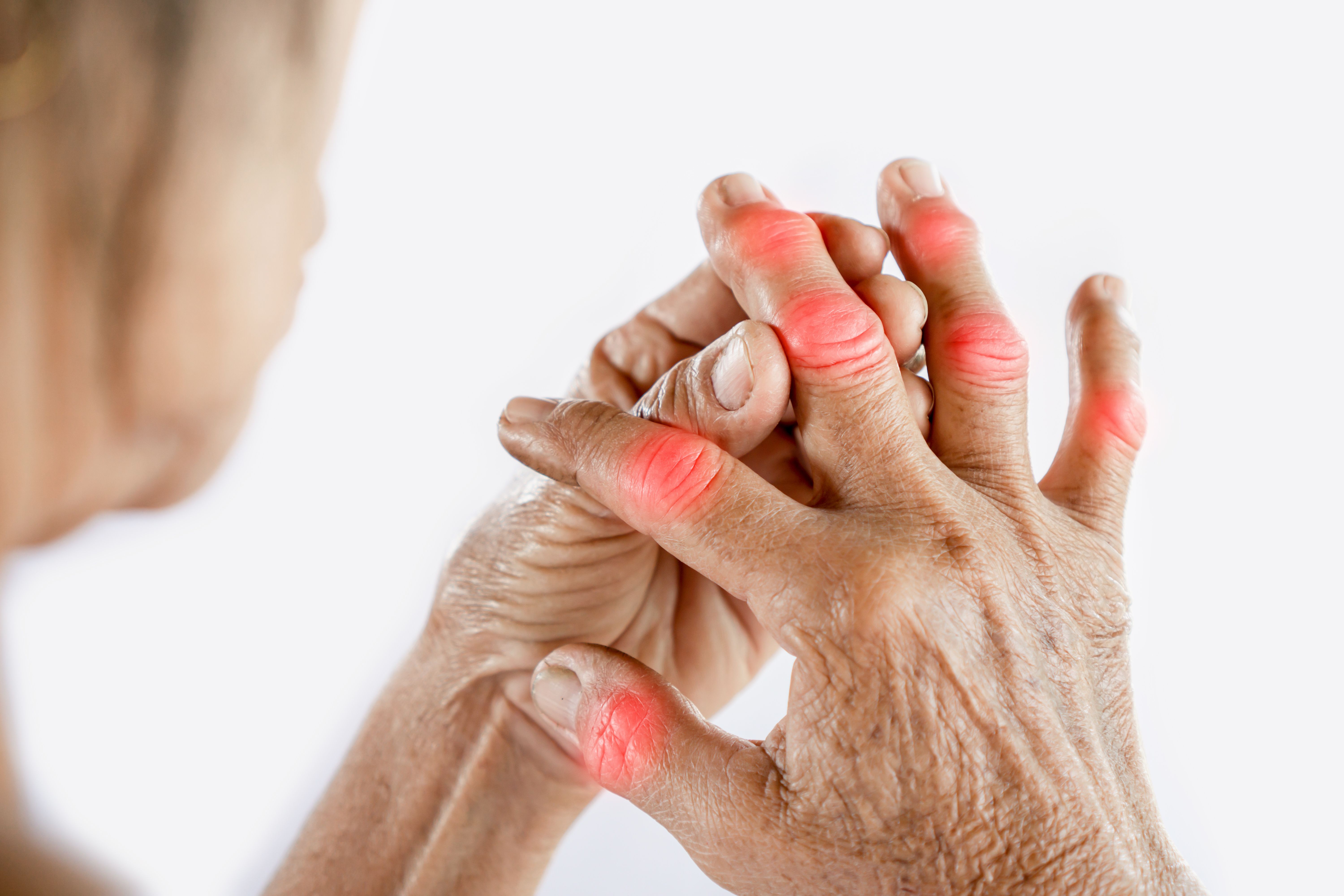- Center on Health Equity & Access
- Clinical
- Health Care Cost
- Health Care Delivery
- Insurance
- Policy
- Technology
- Value-Based Care
Patients With RA in Remission Withdrawing From TNF Inhibition Show Flare Increases
New data presented at ACR 2023 highlighted the differences in rates of flares and Boolean 2.0 remission rates compared to patients with rheumatoid arthritis who continued a tumor necrosis factor inhibitor (TNFi).
This article was originally published in HCPLive® and has been lightly edited.
Individuals that have rheumatoid arthritis (RA) who report being in a sustained state of remission and then finish using TNF inhibitors (TNFi) have a substantial increase in RA flares as well as diminished rates of Boolean 2.0 remission, according to recent findings.1
These findings on RA patients and TNFi were presented at the annual convergence of the American College of Rheumatology (ACR) in San Diego, California.2
Rheumatoid Arthritis Flare | image credit: doucefleur - stock.adobe.com

The research was conducted to address gaps in data in the ongoing dialogue about guidelines in the tapering of TNFi treatment for those in sustained remission, with the investigators maintaining an overall goal of expanding awareness of the longer-term outcomes of such strategies.
The definition used by the investigators for Boolean 2.0 remission is known to be endorsed both by the ACR and by the European Alliance for Associations in Rheumatology (EULAR). The definition categorizes more patients achieving remission than Boolean 1.0.
This new study into TNFi and RA patients was led by Siri Lillegraven, MD, PhD, MPH, and the work was carried out at Diakonhjemmet Hospital in Oslo, Norway. Lillegraven and colleagues implemented a trial design that was randomized, multicenter, and non-inferiority.
Lillegraven’s team referred to the trial as ARCTIC REWIND, during which their biggest aims were comparing the 3-year effects of tapered versus stable treatment with TNFi on those with RA who are in sustained remission. This study followed a prior single-year trial, with the team recruiting 92 subjects from rheumatology facilities in Norway.
The ARCTIC REWIND investigators randomized the subjects 1:1 to either be in the TNFi tapering to withdrawal arm or the continued treatment arm of the study. Over the course of the 3-year research, these subjects were given study visits every 4 months and would then begin full-dose therapy over again if they reported a flare.
Flares were defined by the research team as participants’ loss of their remission as well as a 0.6 unit-or-greater rise observed in subjects’ disease activity score and a 2-or-more swollen joint finding, or as agreed upon by both doctor and by patient. The investigators also looked at the remission status of patients, at use of medication, and at serious side effects or noted complications.
Among the findings, the research team reported that among the original 92 individuals they looked at, 87% of them ended up doing the 3-year follow-up. They found that 75% of the taper arm reported flares versus only 15% among those in the stable arm by the end of the team’s research.
While most of the study subjects who reported flaring were shown to be back in a state of remission by the time that their next office meeting occurred, the taper arm of the study were shown to have consistently had much lower rates of Boolean 2.0 remission throughout the course of the team’s research.
The team led by Lillegraven expressed surprise at the disparity in ACR/EULAR Boolean remission rates between both of these groups. The team noted the necessity of understanding how RA treatment for those in remission can be personalized.
“The risk difference for flares observed in these data [-24% over three years] is quite comparable to that observed in the one-year study,” Lillegraven said in a statement. “That is a little surprising, as we might have expected more of the patients on stable treatment to develop a flare over time, reducing the difference between the two groups.”
The investigators added that they plan to carry out additional research to look at factors that may help to find which individuals should and should not taper their TNFi treatment, with an emphasis being on the centrality of shared decision-making in the consideration of tapering.
“We have started planning a 10-year follow-up of the study to better understand the long-term outcome of different treatment strategies in RA remission,” Lillegraven said in the same statement. “We are [also] considering studies to better understand patient preferences with regard to medication tapering.”
The research summarized here was supported through grants provided by the Research Council of Norway and the South-Eastern Norway Regional Health Authority.
References
- Kjørholt K, Lillegraven S, et al. 3-year Results of Tapering TNFi to Withdrawal Compared to Stable TNFi Among Rheumatoid Arthritis Patients in Sustained Remission: A Multicenter Randomized Trial [abstract]. Arthritis Rheumatol. 2023; 75 (suppl 9). https://acrabstracts.org/abstract/3-year-results-of-tapering-tnfi-to-withdrawal-compared-to-stable-tnfi-among-rheumatoid-arthritis-patients-in-sustained-remission-a-multicenter-randomized-trial/. Accessed November 14, 2023.
- Study Finds Tapering TNF Inhibitors Increases Flares, Lowers Boolean Remission Rates for RA Patients in Remission. American College of Rheumatology. November 10, 2023. Date accessed: November 14, 2023. https://rheumatology.org/press-releases/study-finds-tapering-tnf-inhibitors-increases-flares-lowers-boolean-remission-rates-for-ra-patients-in-remission.
